November 10th–15th, in Canton, Mississippi, there will be a conference dedicated solely to liturgical arts. Carrie will be teaching a class on Church Vestment Making. So probably has something to do with stole-making and pulpit fall-making! That alone is worth the trip. Carrie is beyond excited to reach many people and share her love of making beautiful vestments to glorify the church. Another class that will be incredibly valuable will be the class on Keeping the Art of Needlepoint Alive
Like this:
Like Loading...

The gift of a stole is always something to be appreciated. To help with that, we have developed a variety of stole patterns. There is a 3 1/2-inch stole as well as a 4 1/2-inch stole. The lines of these stoles are identical. It is the width that is different. The stoles have a gently shaped neckline that fits well and then falls from the shoulder. The stoles are adjustable in length. The short length is 51 inches, and the longest length is 55 inches. The tapered stole has the same neckline curve as our other stoles. It then falls to a wider width at the lower end. The stole is available in a short length that works with a full surplice or a longer length. And the V-neck stole a wider stole that uses the same width down the length of the entire stole.
Like this:
Like Loading...
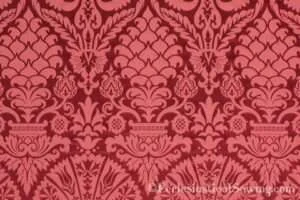
Gaudete Sunday, the third Sunday of Advent, is known as the “other” rose Sunday. While Advent is a preparatory, penitential, and contemplative season, Gaudete Sunday provides a reprieve from solemnity with lighter readings and the joyous sight of rose-colored vestments, a break from the usual dark blue, purple/violet, or black.
Like this:
Like Loading...
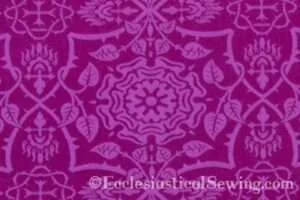
Glastonbury Brocade, originally designed by William Perkins around 1890 A.D., features a Rose and a Crown of Thorns. Legend has it that Joseph of Arimathea visited Glastonbury, England, in the first century and planted a thorn tree on Wearyall Hill. Clippings from the original tree, cut down during the English Civil War, were used to replant a new tree in 1951. This thorn tree is a symbol of interest for both Pagans and Christians, flowering around Easter and Christmas. With a small pattern repeat, Glastonbury Brocade carries a rich heritage and has been widely used for many years.
Like this:
Like Loading...
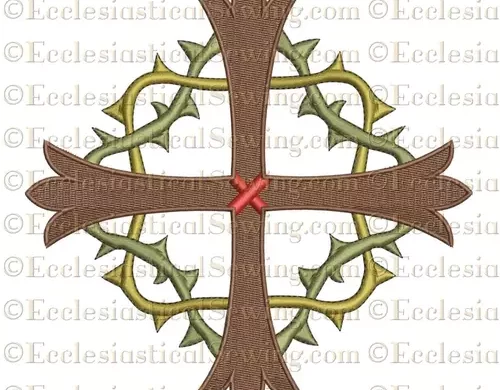
When creating vestments for the House of the Lord, one should always begin with the advice of a pastor. A good place to start is with meaningful symbols that can be used to teach the faith. Things like the Cross, Holy Communion, the Creeds, Prayer, Baptism, Confession, Key to the Kingdom, Holy Monograms, and so forth are appropriate symbols to start with. The symbols can be simple, and in many places that creates a comfort zone. The symbols can also be a bit more elaborate. That sometimes gets beyond the comfort zone of some and into unfamiliar territory for others.
Like this:
Like Loading...

The third special post in July recounts summer travels to Montana, It reflects on the beauty of old, weathered stumps in various locations, contemplating the possibility of life lingering within them. The lush greenery and surviving stump found on the Lohn’s Lake Trail inspire hope and reflection on promises from days of old. As a reference to the O Antiphon “O Root of Jesse,” connecting the natural surroundings with deeper reflections.
Like this:
Like Loading...

The slate frame, available in various sizes, creates a secure foundation for embroidery, with fabric tightly stretched using twill tape and lacing. To make the embroidery process more comfortable, trestle stands hold the slate frame at an adjustable height, allowing for hands-free stitching.
Like this:
Like Loading...
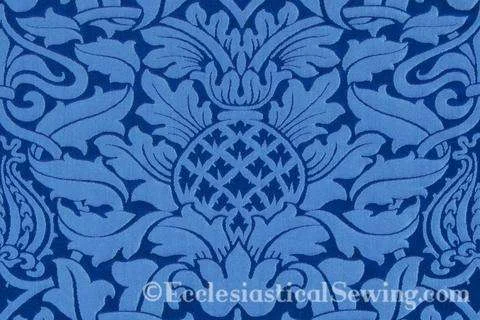
Advent is the first season in the liturgical calendar and it is a season of preparation for celebrating Christ’s birth. It also reminds us to look ahead to the promised return of our Saviour. And as we look forward to this wonderful time, we also look inward at our own personal state, which leads to repentance. This is where the color purple, perhaps a lovely violet shade, is most appropriate.
Like this:
Like Loading...
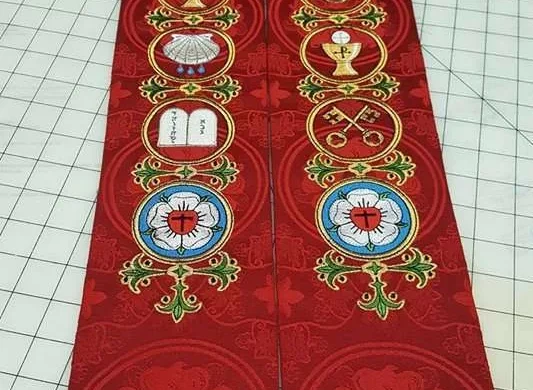
Ecclesiastical Sewing’s newest release of the “Stole Style #3 in the Luther Rose Brocade” is a good example. It is not simply gorgeous – it is confessional. The embroidery is not a random collection of pretty designs. In this case, they are symbolic of the Six Chief Parts.
Like this:
Like Loading...

The Great Antiphons of Advent or The O Antiphons of Advent. An antiphon’s purpose is to summarize the main point of the psalm which helps make the connection between the psalm and the service on which it is chanted or sung. These Great Antiphons point the way toward Christmas and Christ. They talk about the Old and New Testaments and summarize the ties that bind everything together. They are a final push and lead us directly to our Lord’s birth, but more importantly, they shed light on the rest of the story and the greater picture.
Like this:
Like Loading...
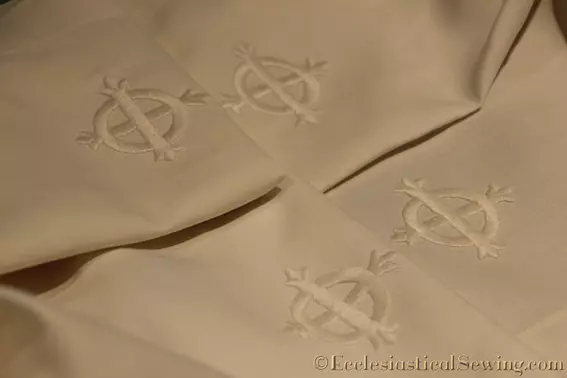
A scrollwork cross. The cross is a creation taken from part of the vintage embroidery designs. This cross is similar to many vintage hand embroidery designs. Satin stitch would be nice around the center diamond shape and the four dots just outside of that. The Scrollwork could be an outline or stem stitch or trailing stitch. The tiny tendrils could be back-stitched or a small stem stitch. The three clover shapes at the cross ends could be stem stitched and filled with seed stitch or satin stitched. The very center of the large diamond could also be filled with seed stitches. It would take only about 3 or 4 stitches to work this little design up.
Like this:
Like Loading...
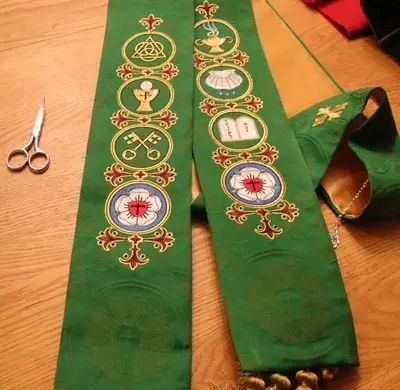
We enter a season filled with green trees and grass dotted with bright pink, purple, red, and white the flowers blooming profusely all around us. One glance around nature provides a feast of green shades for the eye to behold. It brings the entire world to life. Green is also the color for ordinary times in the church years. With the long Trinity Season or the “Green” Season just getting underway in the church year.
Like this:
Like Loading...
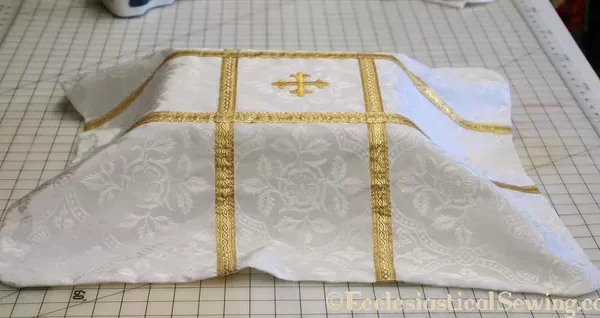
The tradition within the church is to use a Pall to cover the coffin for funerals. At the time of Pugin (early to mid-1800s), Palls were elaborate items, often embellished with extensive embroidery and gold work. Palls are still used today to cover a coffin during a funeral service. They are frequently white in color with a cross or other appropriate design applied. While churches may own a Pall for covering a coffin, they may not have a pall for covering an urn. The use of urns to replace large coffins is becoming more common.
Like this:
Like Loading...
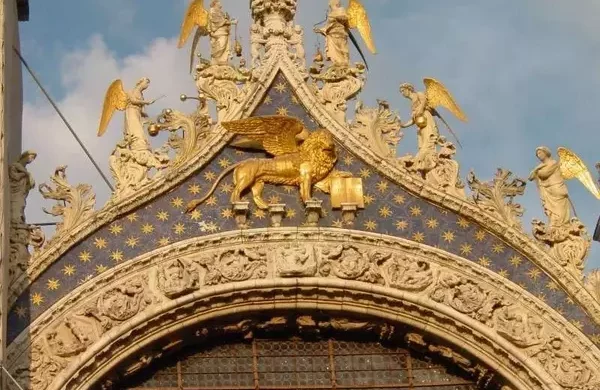
The remarkable story of St. Mark’s Basilica in Venice, revealing the hidden sarcophagus of St. Mark the Evangelist beneath an altar. The basilica, erected in the 9th century, and holds the remains brought from Alexandria by Venetian merchants.
Like this:
Like Loading...
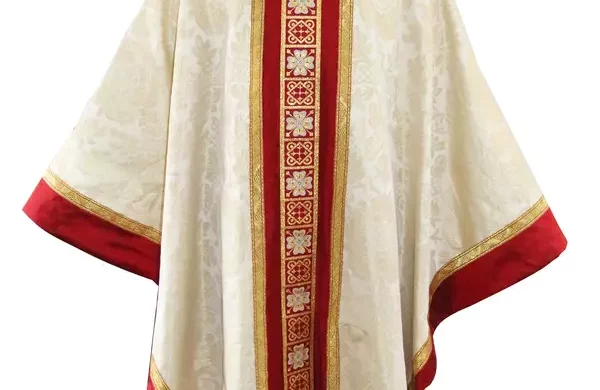
The chasuble pattern is a graceful Monastic style chasuble that is wide, full, and long. The pattern is created in several sizes and has things like lengthening and shortening lines for further customization. The pattern has notches for matching seams when sewing. There is a separate pattern piece for the front and back orphrey band as well as a neckline facing piece.
Like this:
Like Loading...















You must be logged in to post a comment.